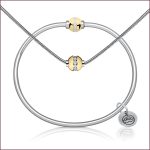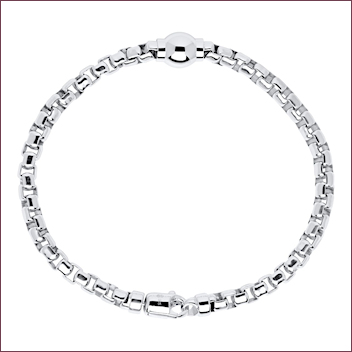A Niche Player
Jewelers looking to stand out in the crowd should take stock in unique market shares that will resonate with target consumers. Two categories that show consistent growth despite economic fluctuations are men’s and youth jewelry.
 Men’s changing attitudes towards grooming and appearance is influencing further demand for men’s accessories. While the women’s accessories category is highly saturated, the landscape for men is far less crowded. Expansion of men’s collections is an opportunity to register steady growth for existing players and newcomers. Euromonitor in 2015 research expects the purchasing power of millennials to grow and it remains a key consumer base for men’s accessories.
Men’s changing attitudes towards grooming and appearance is influencing further demand for men’s accessories. While the women’s accessories category is highly saturated, the landscape for men is far less crowded. Expansion of men’s collections is an opportunity to register steady growth for existing players and newcomers. Euromonitor in 2015 research expects the purchasing power of millennials to grow and it remains a key consumer base for men’s accessories.
When it comes to the youth market, it’s a gold mine for gifting. Parents don’t hesitate to give the world to their children, tells Fashionbi in its “Kidswear Market: Evolution and Potential” report, attributed to parents having children at an older, more financially stable age; a rising birth rate; and baby boomer grandparents with the means to dote over grandkids. Expansion of jewelry geared to children/teens takes minimal investment and space, and yields year round sales.
Get the Male
Men have been an afterthought in jewelry stores for too long, says Scott Rauch, president of SHR Jewelry Group, a division of SDC Designs in New York, with brands including Esquire for men. “Only recognized as the gift giver of jewelry to women, men have been ignored when it comes to marketing jewelry for them. But retailers focusing on the category are reaping the benefits.”
Jewelers must get to know their male customers, what they are interested in and value, says Jonathan Goodman Cohen for the men’s jewelry manufacturer IB Goodman, Newport, Kentucky. “Brands doing well today know who their customers are and speak to them instead of focusing on what’s cool. Guide men to styles that express their personal interests.”
Cohen advises jewelers ask their customers the right questions to get to this answer: How does the product you wear play a meaningful role in your daily life? Why do you avoid wearing some styles? “Listen to honest feedback and observe customer preferences to determine effective 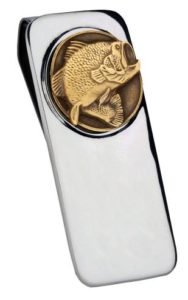 merchandising in your market.”
merchandising in your market.”
Rauch advocates jewelers create their own “men’s corner” in store and on their website. He cites the watch industry a great place to mine for ideas, and also suggests merchandising men’s jewelry with watches in a space geared to guys.
When it comes to promoting a men’s line and department, Alisa Bunger, director of sales for the Dallas-based Prime Art & Jewel, including its men’s brand Ethos, advises jewelers keep it simple and fuss-free; focus on the jewelry, not the romance; and make sure it’s easy to wear and easy to find in store.
An important caveat, says Bunger, is to feature a wide range of prices. “You need items in lower price points that will encourage self-purchase, while offering more substantial items that a gift giver will feel the value and be proud to purchase for someone special.” Cohen encourages jewelers try new products, but not go overboard: “Stay authentic to your brand message.”
Paramount in all of this is compelling stories, says Cohen, who references IBG’s latest Americana Collection that expresses American interests with iconic emblems cast in bronze. “The line is designed for the guy who doesn’t think about wearing jewelry, using iconic emblems to have a personal message with the wearer that adds meaning to his style. Americana takes on that aesthetic of a casual statement, a comfortable signature piece, expressive but not flashy.”
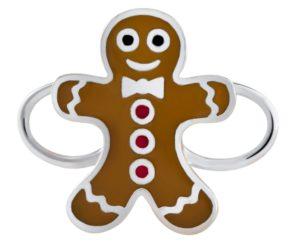 Cohen advises jewelers try lifestyle merchandising. “A product alone is hard to get a feel for, but visual cues create an experience. Attention to websites and customer messaging is paramount. Digital media is a great way to communicate with consumers.” On your website and social media test new products, seek market information, talk style trends, share gift ideas, tell stories. He says personalization opportunities enhance the experience.
Cohen advises jewelers try lifestyle merchandising. “A product alone is hard to get a feel for, but visual cues create an experience. Attention to websites and customer messaging is paramount. Digital media is a great way to communicate with consumers.” On your website and social media test new products, seek market information, talk style trends, share gift ideas, tell stories. He says personalization opportunities enhance the experience.
Child’s Play
Audrey Robbins for Marathon, Attleboro, Massachusetts, known for its Kiddie Kraft brand, hails this niche as an attraction that builds store traffic and inspires impulse buys. “If it is visible and nicely displayed, it will sell. Consumers don’t fret about the price because the items are affordable and well made.”
In so doing, Robbins says jewelers are nurturing the tradition of giving fine jewelry as a gift of love, particularly for the next generation. Forbes cites in a May 2017 article that by 2020 Gen Z will account for 40% of consumers.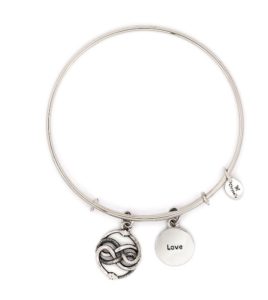
“It’s important to build brand loyalty from a young age in such a competitive market,” says Rhian Burrell Joseph, marketing manager for Chrysalis, a Richline brand known for its adjustable charm bangles. The unique meanings that charms convey make it the perfect gift, and the great price points enable younger customers to buy for friends, as well as receive from adults.
Joseph hails a strong online presence key to communicating with the youth market in a relevant way. She advises targeting meaningful content not only to loved ones gifting, but kids influencing those purchases. Messaging should be engaging and to the point. Look to mom and daughter duos in your community to connect with for insights and inspiration. Promote wish lists and custom services.

